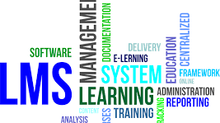Captivate 9 review, part 1
- Dylan Hedges
- May 31, 2017
- 3 min read
Here at Pathways, we truly don’t have a preferred eLearning authoring tool, as we accommodate our development workflow to the needs of our clients and the project. Of course, we offer expertise not only using these authoring but so many other tools for audio, video, graphics, interactions, etc., and we suggest to our clients the optimal route, for the sake of the project. However, in many cases, we are restricted by the requests from our clients, who will ask to only use one tool or another to produce their eLearning modules, depending on the licenses they hold.
As an example, I have been working on an eLearning project for a few weeks now, and part of the requirements is that it must be developed using Captivate 9. Back in the day, when I started developing eLearning modules, I did so by using Captivate 5, and at that time I thought it was the greatest tool ever. Don’t get me wrong, I still think Captivate is a very good authoring software, and it has served me well for different eLearning projects. However, I have been mostly working with Articulate Storyline for about 3 years now, and I can’t help having this internal discussion on which one is better between these two.
I recently posted an article regarding some of the new features I have been discovering and using with the new Articulate 360, but I think it’s time for me to write something about Captivate 9.
User interface and types of projects
I have found that the user interface is very similar to older versions that I used to work with, which make my comeback to Captivate so much easier than I anticipated, given that I hadn’t used it in several years, but thanks to this preservation of a similar layout, I was able to have it up and running on a new eLearning project in no time.
Of course, there are things that confused me a little bit, especially when creating a new project, for example, the type of project you choose at the beginning. Turns out, there is not only the option of creating a blank project (what I would call a “standard” project) but also there is the option to create a responsive project. At first, I thought a responsive project would be the same as a blank project, with the only addition that I would be able to adjust the layout to different screens and devices. Well, I wasn’t entirely wrong, but it didn’t work for my purposes, since the real difference is at the moment of publishing. A blank project will give you the option of publishing to either Flash or HTML, or both, whereas a responsive project will only give the option to publish only for HTML, which makes sense since it has to be responsive.
In comparison, Storyline 360, will always give you the option to publish to Flash if you want it, because, like I said, some times you are restricted by the technology used on the client side.
So, if I wanted to publish to Flash, but had a responsive project, is there a workaround? Well, technically, there is, you would just need to create a blank project and then copy and paste your slides from the responsive project to the blank project. That is, if you don’t care about having responsiveness on your eLearning module.
Media
I am sure we all now this, but different types of media, like images, audio our video, will always enrich the experience of our learners and have them engaged to the content for longer periods of time.
Inserting media in your Captivate eLearning module, is fairly easy, you just need to keep in mind the different types of formats accepted by this software, for example, for video, I will always recommend using MP4, since it is a widely used format nowadays.
The process of inserting media, more specifically videos, will become a bit confusing when you want to place your video on the slide, because Captivate will always ask how do you want to insert the video: An Event triggered video, which means it is not synced to the slide timeline because it has its own timeline, or a synced video, which is synced to the slide timeline and you can put it just on one slide or spread it through an specified number of slides. Which one is better? Well there isn’t a correct or incorrect answer, because it all depends what you want to do with the video.
Talking about media, prompts me to talk about the next feature: The Library. But let’s cover this on another post, to give you some time to process the information you just read, and take a deep breath before you read my next post, in which I will explain the awesomeness of the Library in Captivate.































Comments